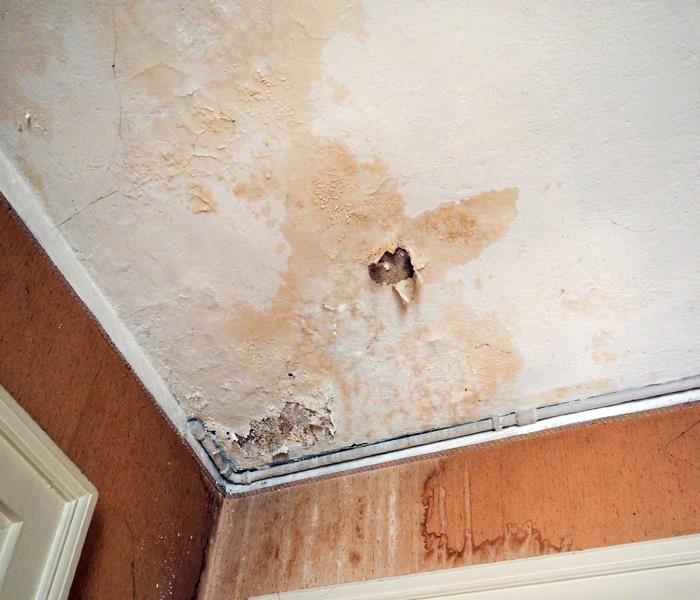Basic South Miami Water Damage Remediation Steps
6/10/2015 (Permalink)
 Damage from water can quickly destroy a home by staining furnishings, encouraging the development of rot and causing the growth of mold.
Damage from water can quickly destroy a home by staining furnishings, encouraging the development of rot and causing the growth of mold.
Basic Water Damage Remediation Steps
Damage from water can quickly destroy a home by staining furnishings, encouraging the development of rot and causing the growth of mold. While some minor water damage can be repaired by a homeowner, in almost every case it is best to allow a South Miami water damage repair specialist to do the work, like SERVPRO. SERVPRO will know what problem signs to look for inside the home and will be able to determine the proper course of correction. Though the use of a water damage specialist is recommended, homeowners can take some basic steps to reduce the damage to their flooded homes.
Before worrying about the South Miami water damage, a homeowner needs to make certain that the home is safe. It is important to inspect the structure for stability and any potential exterior threats. Inside the home, the largest potential threat is electrocution. The power to the home should be turned off by the power company or an electrician before entering the home. Once the power is off, the home can be inspected for damage and other potential safety hazards.
Once it is determined that the home is safe, the bulk of the water should be removed as quickly as possible. Windows and doors should be opened to provide ventilation into the home. Standing water can be removed by the use of a pump, swept out doors or mopped up. Water should be drained into a storm drain or downhill from the property to prevent it from running back inside. Once the bulk of the water is removed, fans can be used to accelerate drying. A dehumidifier can also help to remove excess moisture from the air.
Furniture and other moveable items should be take outside and left in the sun to begin to dry. Wood furniture should be wiped clean. In most cases, upholstered furniture is not worth trying to save as mold will grow inside the furniture if even the smallest amount of moisture is left behind. Pictures and other sentimental items should also be placed in the sun to dry. Clothing should be laundered as soon as possible. A vacuum approved for use with water can also be used to remove excess water from items.
Once a home is as clean and dry as possible, it should be professionally inspected for mold. Mold can grow inside walls, on piping and wiring and in other areas most homeowners cannot easily inspect. South Miami water damage remediation experts, like SERVPRO, can find these hiding places and also apply special coatings to surfaces inside the home to prevent the growth of mold.
What To Do After Flooding
- Remove excess water by mopping and blotting.
- Wipe excess water from wood furniture after removal of lamps and tabletop items.
- Remove and prop wet upholstery and cushions.
- Place aluminum foil or wood blocks between furniture legs and wet carpeting.
- Turn air conditioning on for maximum drying in summer.
- Remove colored rugs from wet carpeting.
- Remove art objects to a safe, dry place.
- Gather loose items from floors.
What NOT To Do After Flooding
- Don't leave wet fabrics in place. Hang furs and leather goods.
- Don't leave books, magazines or other colored items on wet carpet or floors.
- Don't use your household vacuum to remove water.
- Don't use television or other household appliances.
- Don't turn on ceiling fixtures if ceiling is wet, and keep out of rooms where ceilings are sagging.



 24/7 Emergency Service
24/7 Emergency Service